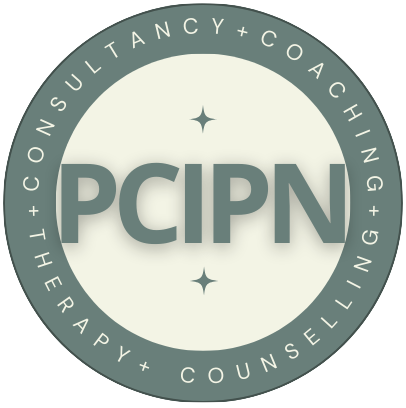qualify to be a supervisor
live online sessions
Training days are run over ten Saturdays between the 18th of January 2025 and 14 June 2025.
To book your spot, email us now: info@pcipn.org

TEN DAYS TRAINING OVER FIVE MONTHS
ONE
FOUNDATIONS OF INTEGRATIVE SUPERVISION
The theoretical foundation of supervision
- The principles underpinning supervision
- The aims, functions and processes of supervision
- The dual purpose of supervision (i.e. to attend to the needs of the supervisee and the client)
- Distinctions between therapy/coaching and supervision.
Integrative Supervision
- What do we integrate? The theoretical foundations of integrative practice
- Theoretical foundations of integrative supervision
- Formulating and articulating integrative supervision to the supervisee
TWO
ETHICS AND FACILITATION
Ethical and professional practice
- Ethical, legal and professional frameworks
- Roles and responsibilities
- Boundaries
- Ethical challenges
Facilitation of supervision
- Preparation for the supervisor role
- Contracting
- Maintaining the boundaries of supervision sessions
- Employing audio/visual recorded practice
THREE
RELATIONSHIP, AIMS, and structure
Relational skills, qualities and behaviours
- Working with the relational dynamics of the supervisory relationship
- Relational skills, qualities and behaviours
- How to balance supporting and challenging
- Working collaboratively
Directionality
- How to be clear about what the supervisee wants from the session and the importance of this for working collaboratively.
- Helping the supervisee clarify clients’ aspirations (what they want to get from the process, where they would like to be when the process is completed)
- The structure of the supervision session (in line with the PC model).
FOUR
FACILITATION OF INTEGRATIVE PRACTICE
The focus
- How to maintain the focus of the supervision session
- Helping the supervisee maintain the focus with the client and navigate collaboratively the direction and flow of the session
- Dealing with ‘meandering’ or ‘getting stuck’ in supervision and helping the supervise deal with these.
Working with ‘gaps’
- How to recognise ‘blind spots’ in the supervisee’s account, and how to bring it up
- How to recognise one’s own blind spots, that they are colluding with or being ‘led’ by the supervisee and how to address it
- Helping the supervisee recognise what is missing in theclient’s accounts or their blind spots and how to bring it up with them.
- How to help the supervisee recognise that they are colluding with or being ‘led’ by the client and how to address it.
Five
WORKING WITH THE INNER WOR?D OF THE CLIENT
Working with internal conflicts and barriers
- Recognise one’s own internal conflicts and barriers in supervisory session
- Recognise and work with the supervisee’s internal conflicts and barriers
- Helping the supervisee work with clients’ conflicts and barriers
Working with the roots of clients’ issues
- Helping the supervises locate and work with the roots of client’s issues
- Examining assumptions about the roots (e.g. are they always in the past? Are they always unconscious or deeply buried? Do they always need to be found and addressed?)
- The role of choice
six
MAKING A CHANGE
Facilitating clients to achieve their goals
- Turning aspirations into goals
- Exploring interventions that can help the client achieve their goals
Helping clients to make changes
- The reasons for reluctance to make a change or procrastination
- Exploring with the supervisee how the above can be overcome
- Working with motivation
seven
SUSTAINING A CHANGE AND RELATIONSHIP
Supporting clients in sustaining the change
- Exploring with the supervisee how the client can best be supported to sustain the desired change once it is put into practice.
- Discussing various ways of ending (e.g. open, fixed, gradual, etc.)
The supervisory relationship
- Establishing and maintaining effective supervisory relationships
- Power in the supervisory relationship
- Conflict, challenges and ruptures in the supervisory relationship
- Ending the supervisory relationship
- How and when to offer the ‘first aid’?
eight
ONLINE/PHONE AND GROUP SUPERVISION
Online and Phone supervision
- Supervising the work of online/phone counsellors
- Establishing and maintaining online and/or phone supervisory relationships
- Specific ethical and professional considerations
- The practicalities of online and phone supervision
Group supervision
- Develop and maintain relationships in the group
- Develop and manage the group process
- Giving feedback in the group
- Use of self in the group process
nine
ABOUT THE SUPERVISEE
Equality, Diversity and Inclusion
- Understanding the terms
- Attitudes and behaviours
- Skills for working with equality, diversity and inclusion
- Communication and language
- Promoting diversity awareness in the supervisee
Individual needs of the supervisee
- Responding to the individuality of the supervisee
- The supervisee in context
- Attending to the supervisee’s wellbeing
- Facilitating the supervisee’s development
- Supervision of trainee and novice counsellors
- Evaluation and giving feedback
ten
ABOUT THE SUPERVISOR
Supervisor Self-awareness
- Awareness of self in the supervisor role
- Use of self in the supervisory relationship and process
Professional development of the supervisor
- Supervision consultancy
- Continuing professional development (CPD)
- Learning from the supervision process
assessment
Your assignment will have three components:
- Professional log (notes of your supervision practice sessions)
- A reflective 2000 words essay
- A recorded session with commentary
You will receive feedback on your assignments, but they are not graded (only pass-fail). If you fail any of the above components, you will have an opportunity to resubmit them.
The assignments can be submitted any time between the end of the course and next September (or one year from the commencement of the course).
certification
To receive a certificate, you will also need to attend a minimum of 80% of sessions. But don’t worry if it happens that you miss more than that. You will be able to attend any missed session with the following cohort starting in February.
The same applies to the obligatory 20 supervision sessions. You will have a grace period until next September to complete them. You will receive your certificate as soon as you complete all the course requirements.
BACP does not yet accredit supervision training courses, but our course is aligned with the BACP Supervision Competence Framework as well as the BACP Supervision Curriculum, so the certificate can be included in your portfolio for individual accreditation.
